Measurements | Term 1 Unit 1 | 6th Science - Length | 6th Science : Term 1 Unit 1 : Measurements
Chapter: 6th Science : Term 1 Unit 1 : Measurements
Length
Length
What is length? The
distance between one end and the other desired end is called as length. It may
be the distance between the edges of a book or a table or the corners of a
football ground or even from your home to school.
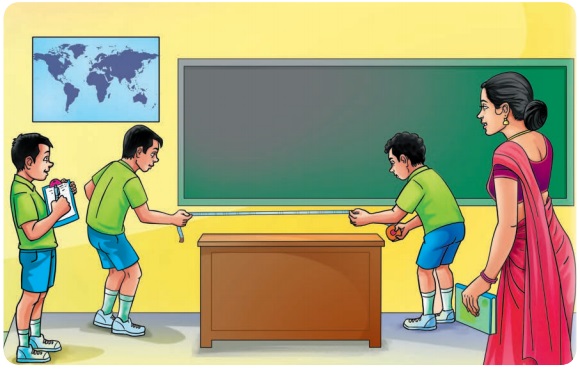
The standard unit
of length is 'Metre'. It is represented by letter ‘m’. Very small lengths can
be measured in mm and cm. Still larger measures, say height of a building, a
banner or a lamp post are all measured in metre. How to express still longer
lengths? Say distance between two cities or villages or distance between your
school and home? It is expressed in kilometre (km).
Know the unit of
length
1 km (kilometre) = 1000
m (metre)
1 m (metre) = 100
cm(centimetre)
1 cm (centimetre) =
10 mm (millimetre)
Think: Can you
convert 1 km in terms of cm?
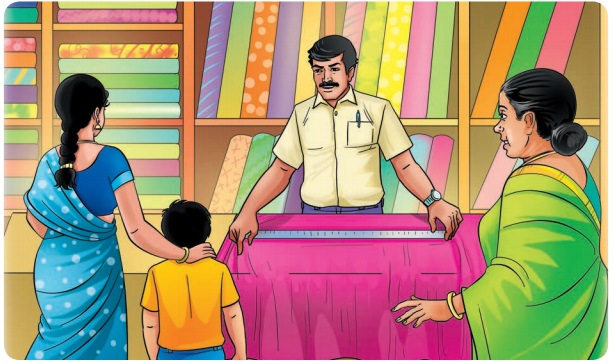
Measure the length
of your pencil now. For sure the lengths of all your pencils are not the same.
1. Take the meter
scale
2. Check lines with
marking 1,2,3,4 ... till 15 (for smaller scales) or till 30 (bigger scales).
The distance between 1 and 2 is denotes a centimetre (it is written as ‘cm’).
3. Notice, in
between 1 and 2 there will be smaller markings. If you count, there will be 9
such lines. The distance between any two consecutive smaller markings within a
‘cm’ denotes a millimetre (written as ‘mm’).
Let us now
understand more about the three important quantities – Length, Mass and Time.
From the activity:1
you see that your measurement is different from that of your friends. Also
different measuring units are used in different countries.
Activity
1

Form a group of 5 members. Select one person and others measure her/his height individually using your hand span and cubit. Compare your answers with others. Do you find any differences? Why? Now you all stand in front of a wall and mark your height on the wall. Measure your height with a scale. What differences do you infer?
Why do we need SI
Units?
The sake of
uniformity, scientists all over the world have adopted a common set of units to
express measurements. This system is called as the International System of
Units or SI Units.
SI unit for length
is Metre
SI Unit for mass is
Kilogram
SI Unit for time is
Second
Area of Surface = m2
Volume of Solid = m3
Multiples and sub multiples
of SI Units
Prefixes used in SI
Units. (Always remember the base unit is metre, litre, kilogram)
Corrective Measures for Measurement
Measurement has to
be accurate and the approach has to be correct always. In our day to day life
approximation may not have much impact. But it has a large impact in scientific
calculations. For example, if the curvature of key (lock and key) is changed by
even 1 mm, the lock would not open. Let us look at some common mistakes that
occur while using a scale.
To measure the
length of a pin using a scale

* The head of the
pin has to coincide with ‘0’ of the scale.
* Count the number
of centimetre and from there count the number of finer divisions. The count of
the division is ‘mm’
* In the above
example the length of pin is 2 cm and 6 mm.
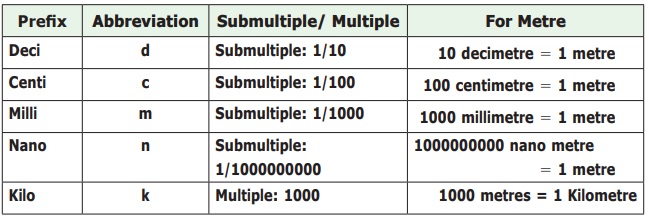
In the given
activity, measure the quantities using suitable measuring units and express
them with suitable multiple and submultiples.
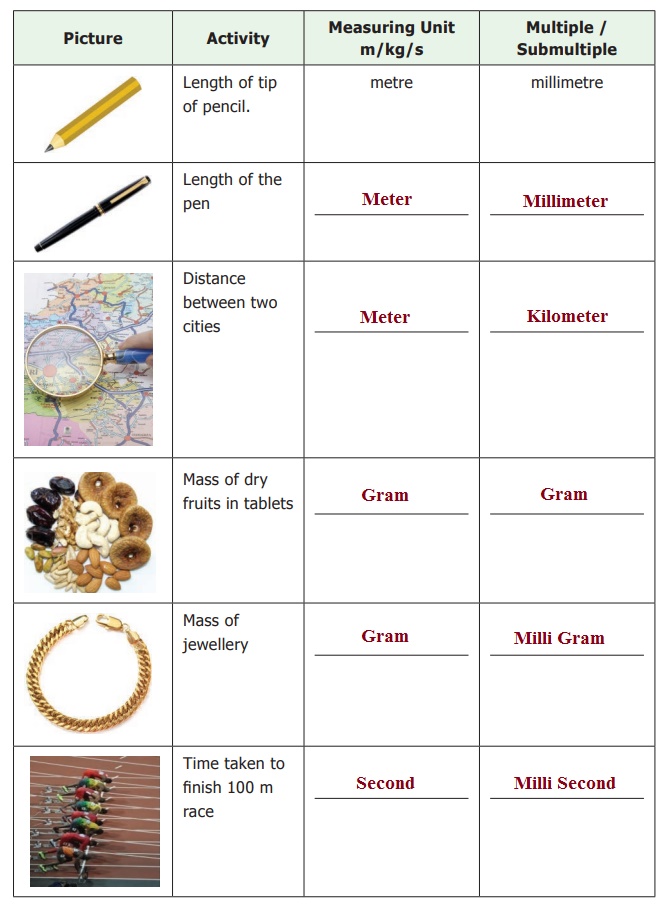
* Take care to
write the correct submultiple
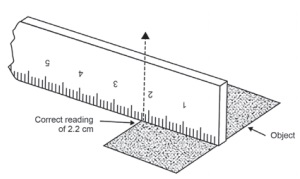
Parallax is a
displacement or difference in the apparent position of an object viewed along
two different lines of sight.
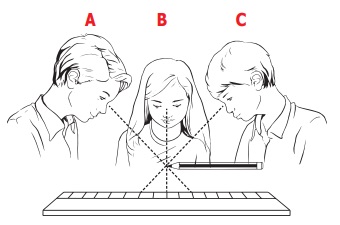
Correct position of
the eye is also important for taking measurement. Your eye must be exactly in
front of vertically above the point where the measurement has to be taken. In
the above representation, to avoid parallax error, reading will be correct.
From positions ‘A’ and ‘C’, the readings will be different and erroneous.
Methods of measuring Length of a curved line:
Activity
2
Aim: To find the length of a curved
line using a string.
Materials
needed: A meter scale,
a measuring tape, a string and a sketch pen
Method:
* Draw
a curved line AB on a piece of paper
* Place
a string along the curved line. Make sure that the string covers every bit of
the curved line.
* Mark
the points where the curved line begins and ends on the string.
* Now,
stretch the string along the length of a meter scale and measure the distance
between the two markings of the string. Note it.
* This
will give you the length of a curved line.

Find
the length of a banana.
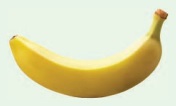
Activity
3
Measuring
the length of a curved line using a divider
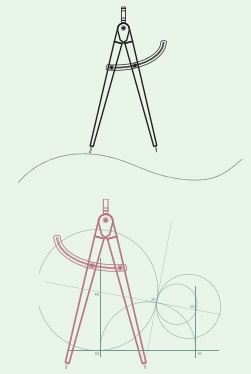
Draw
a curved line AB on a piece of paper
Separate
the legs of the divider by 0.5 cm or 1 cm using a ruler.
Place
it on the curved line starting from one end. Mark the position of the other end.
Move it along the line again and again cutting the line into number of segments
of equal lengths. The remaining parts of the line can be measured using a
scale.
Count
the number of segments
Therefore,
the length of the line = (number of segments × length of each segment) +
length of the left over part.
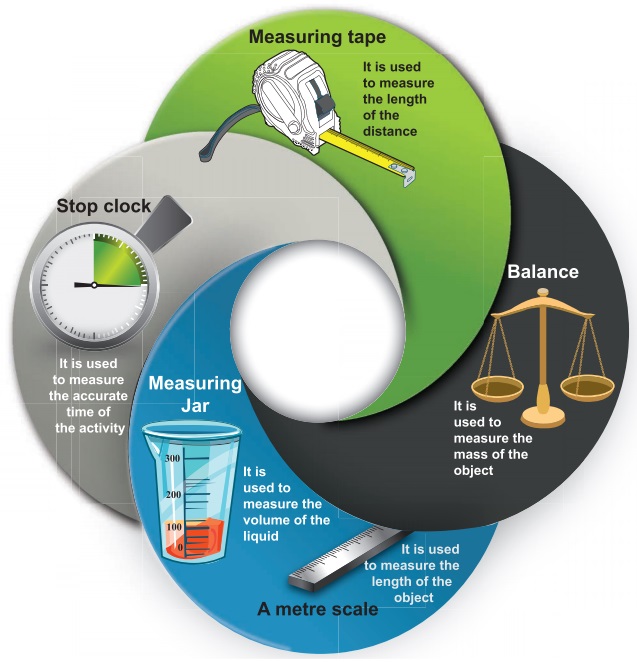
Related Topics